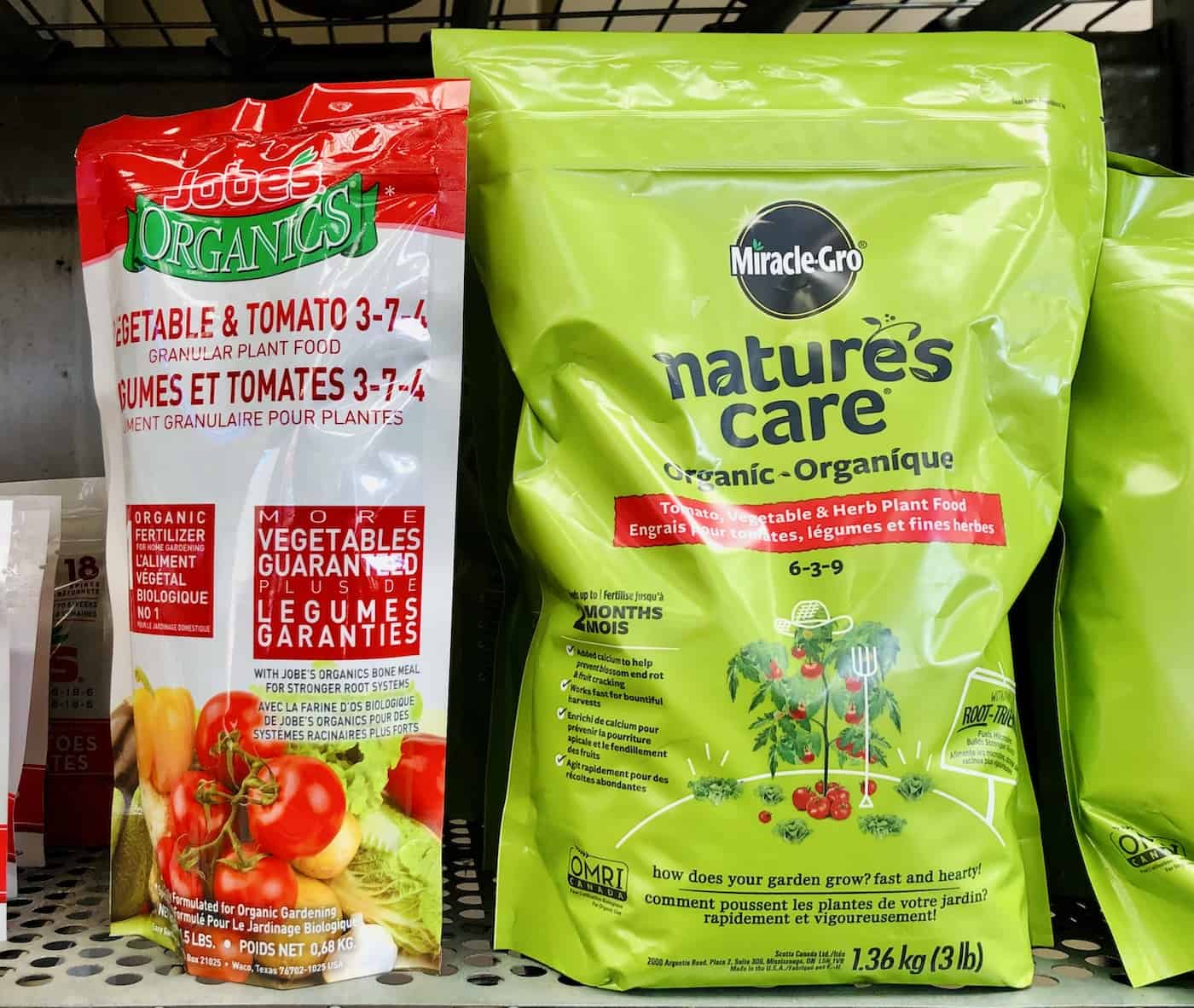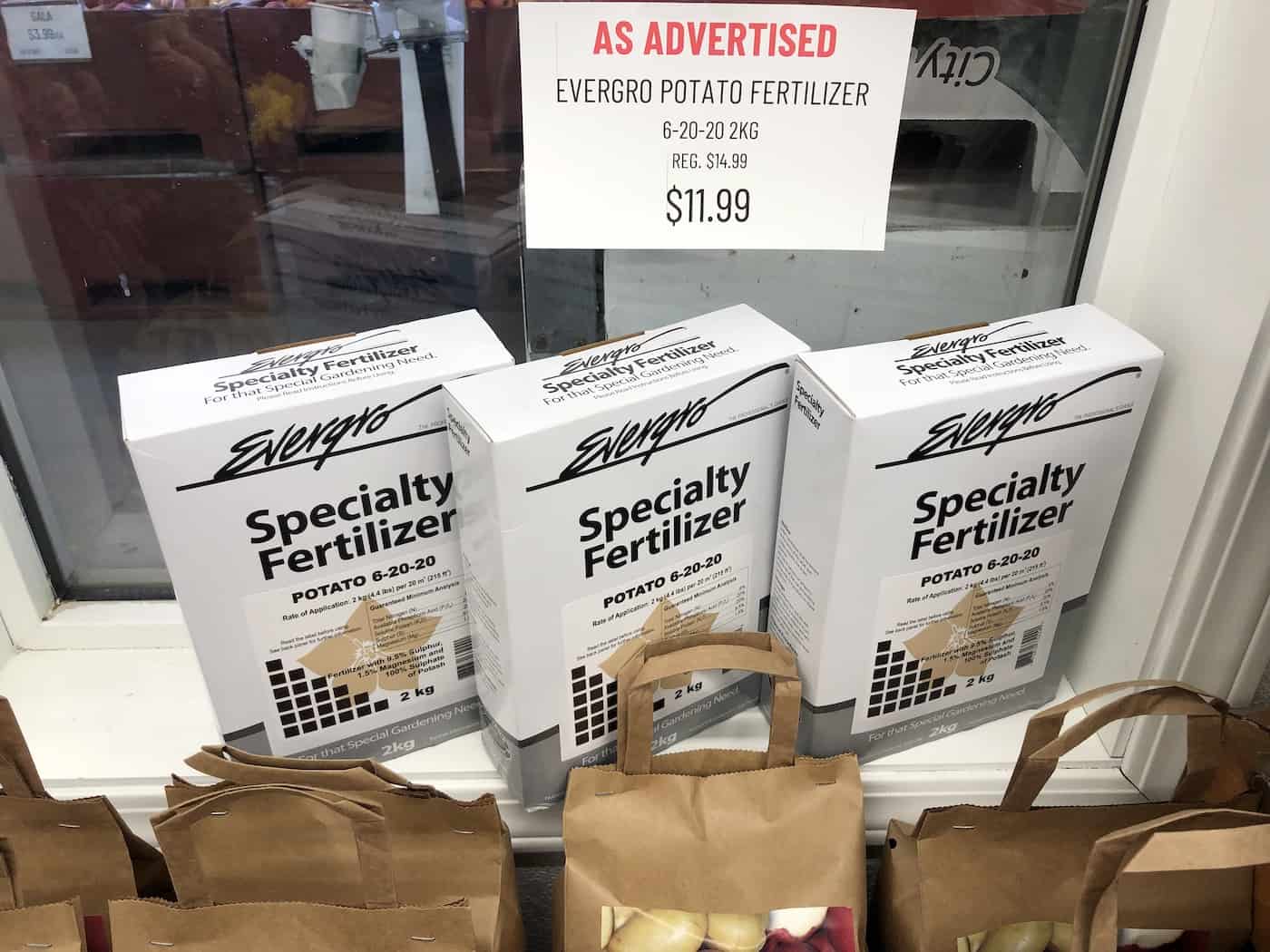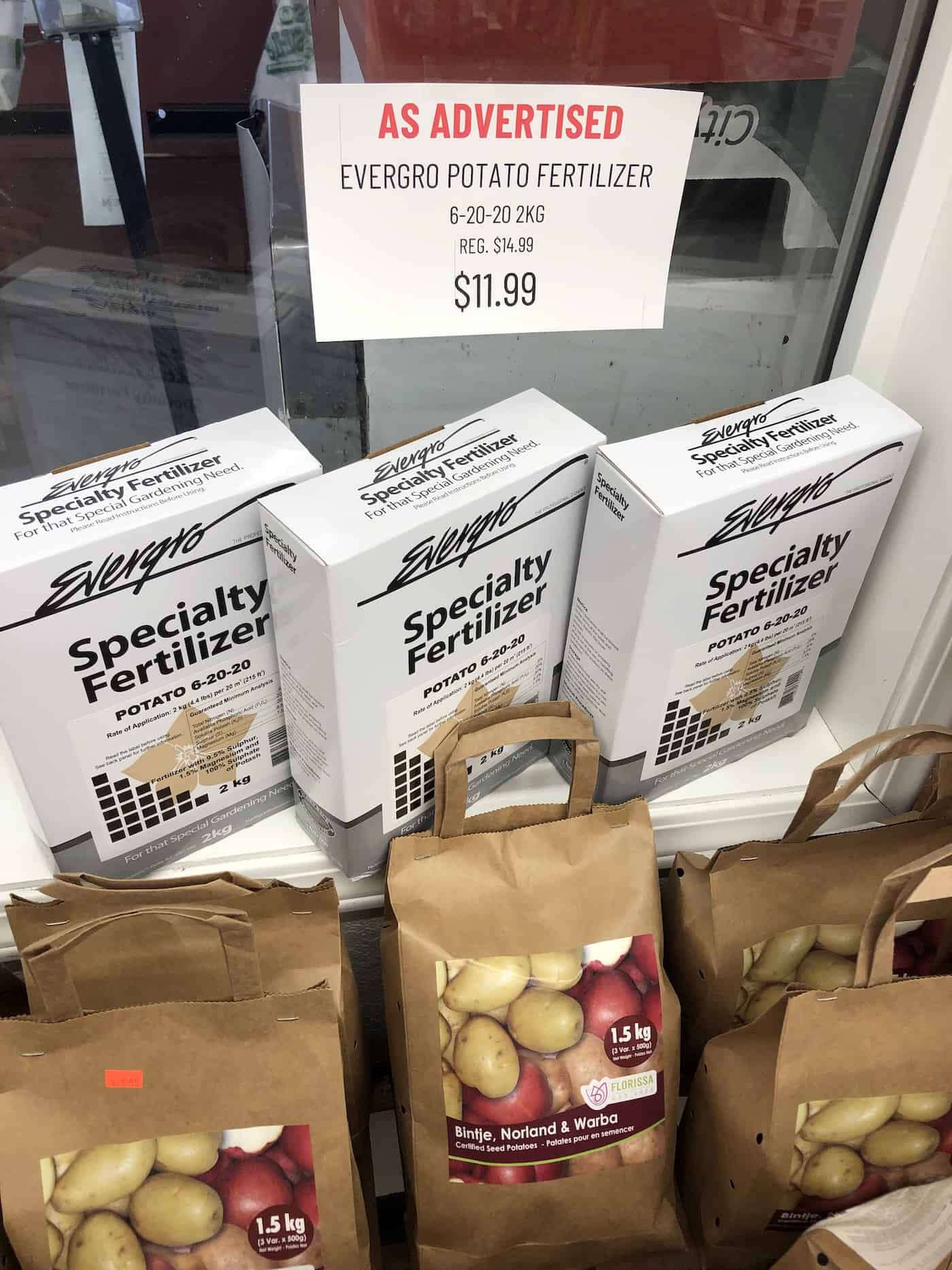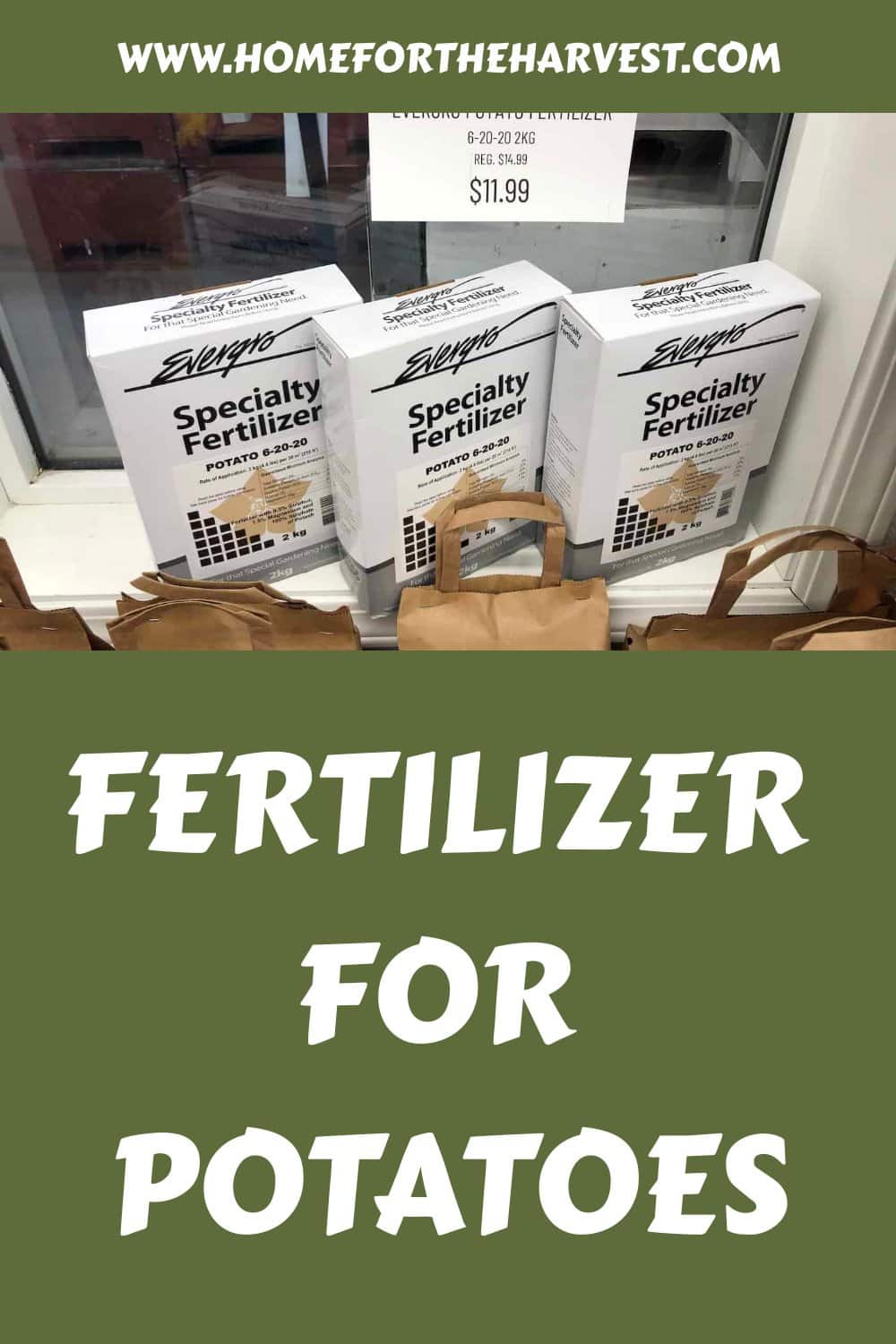Wondering what’s the best fertilizer for potatoes? Fortunately, there are a few different things you can add to your soil to help your plants thrive.
Fertilizer for potatoes generally starts with applying a balanced all-purpose slow-release fertilizer to the soil about a week before the seed potatoes are planted. You can also adjust the pH to between 6.0 and 6.5 (slightly acidic) if necessary.
Several weeks after planting, side-dress the sprouting plants with a calcium-rich fertilizer (like this tomato fertilizer). In nutrient-deficient soils, apply a quick-acting water-soluble tomato/veggie/potato fertilizer rich in phosphorus and potassium on a frequent basis. Stop fertilizing potato plants about a month before harvesting the tubers.
Read on to learn all about fertilizer for potatoes!
Fertilizer for potatoes: The basics
There are many different types of fertilizer available for potatoes, including organic and synthetic options. Some popular generic natural fertilizers include compost, aged manure, and seaweed extracts. You can also find packaged organic fertilizer products that work well for potatoes (I like Burpee, Hoss, and Dr. Earth). Synthetic fertilizers (like all-in-one veggie fertilizer products) are also widely used in conventional gardens and farms to boost potato growth.
The most common method of feeding potato plants is to prepare the soil prior to planting the seed potatoes. This usually means mixing in some complete slow-release plant food or an organic matter like compost – usually about a week or two prior to planting. In alkaline soils, a bit of sulfur can help to bring down the pH so the soil is slightly acidic (preferable for potatoes).

Wait until the potato plants are sprouting before feeding them again. At this point, a calcium-rich fertilizer can be helpful to counteract rust spot, so avoid basic synthetic fertilizers that only contain nitrogen, phosphorus, and potassium. Typically, tomato fertilizers contain quite a bit of calcium and work very well for potato plants too, as these plants are in the same botanical family. Granular fertilizers tend to be slower-release than water-soluble formulas, so use a liquid fertilizer if you need quick results.

Key nutrients for potato plants
All potatoes need nitrogen, phosphorus, and potassium to grow well. These are the three main numbers you’ll see on bags of fertilizer (e.g., 10-10-10). Nitrogen is necessary for foliage growth, phosphorus encourages root development, and potassium helps the plant resist disease and pests.
When growing potatoes, avoid using fertilizers that are significantly higher in nitrogen than in phosphorus, as this can lead to a large leafy plant without much tuber development. Potato plants also need quite a bit of calcium to thrive. Young plants are generally fertilized with calcium nitrate or similar calcium-rich vegetable/tomato fertilizer.
When to fertilize potato plants
When it comes to timing your fertilizer application, be sure to start early! Fertilizer for potatoes should be applied a week or two before planting the potato tubers. This will give the fertilizer time to break down and be absorbed by the soil before the plants start growing.
Pre-fertilizing is usually done with a general all-purpose vegetable garden fertilizer like a slow-release organic granular fertilizer. This can be sprinkled on top of the soil or worked into the top 6″ of soil prior to planting. If you’re using potato grow bags, you can just use pre-fertilized potting mix as a base.
Don’t fertilize again until the plants have sprouted up above the soil. If you’re using a slow-release fertilizer, you may only need to apply it once, usually several weeks after planting. However, if your soil is very nutrient-deficient, you may wish to apply a water-soluble fertilizer frequently throughout the growing season. Liquid fertilizers deliver a quick dose of nutrients to plants in an easily accessible manner.
“Water with an organic liquid fertilizer every few weeks to encourage strong growth.”
GrowVeg: The Beginner’s Guide to Easy Vegetable Gardening, by Benedict Vanheems
A calcium-rich fertilizer is usually applied to the potato plants 2-4 weeks after planting. This addition of calcium just as the plants are sprouting and being hilled provides a key nutrient for plant cell development just as growth is increasing. Typically, potatoes take 3-4 months to grow, so be sure to stock up on your preferred product.
Here’s a detailed guide all about how to grow potatoes if you’re new to the process.

How to fertilize potato plants
Before fertilizing potato plants, it’s important to test your soil and determine which nutrients need to be added. This can usually be done with a home soil test where you collect the sample and ship it to a proper soil testing laboratory. Alternatively, you can grow your potatoes in bags and use a pre-fertilized potting mix.
After you’ve determined which nutrients need to be added to your soil, you can begin fertilizing potato plants. If you’re using a granular fertilizer, apply it to the soil around the plants according to the manufacturer’s directions. Mix liquid fertilizer with water and apply it to the soil with a watering can or hose-end applicator.
It’s important not to over-fertilize potato plants as this can actually damage the plants and reduce yields. If you’re unsure how much fertilizer to use, it’s always better to err on the side of caution and use less rather than more.
Whether you’re planting potatoes at home or in a commercial setting, it’s crucial to fertilize them properly in order to ensure optimal growth. Start by reading the labels on fertilizer bags carefully to determine which product is best suited for your needs, and then use the appropriate application methods to provide your potato plants with all the nutrients they need!
FAQs about fertilizing potato plants
When should I fertilize my potatoes?
Fertilizer for potatoes generally starts with applying a balanced all-purpose slow-release organic fertilizer about a week before the seed potatoes are planted. Fertilize again several weeks after planting and continue doing so frequently in nutrient-deficient soils. Stop fertilizing one month prior to harvest.
Do potatoes need a lot of fertilizer?
Potatoes do need consistent fertilization, especially when planted in nutrient-deficient soils. If grown in naturally-rich soil, they may never need to be fed, but if the plants are grown in less-than-perfect soil, plan on enriching the soil before planting the seed potatoes and then adding a well-rounded fertilizer throughout the growing season.
How do you make potatoes grow bigger?
To help your potatoes grow bigger, be sure to choose a variety that tends to grow large, enrich the soil prior to planting, plant the seed potatoes early enough, keep the plants well-watered, hill the soil up against the stem as it grows taller, and fertilize the plants regularly until they are mature.
What is the best natural fertilizer for potatoes?
Some popular organic fertilizers include compost, manure, and seaweed extracts. There are also quite a few pre-mixed organic tomato/veggie fertilizers that work well for potato plants.






